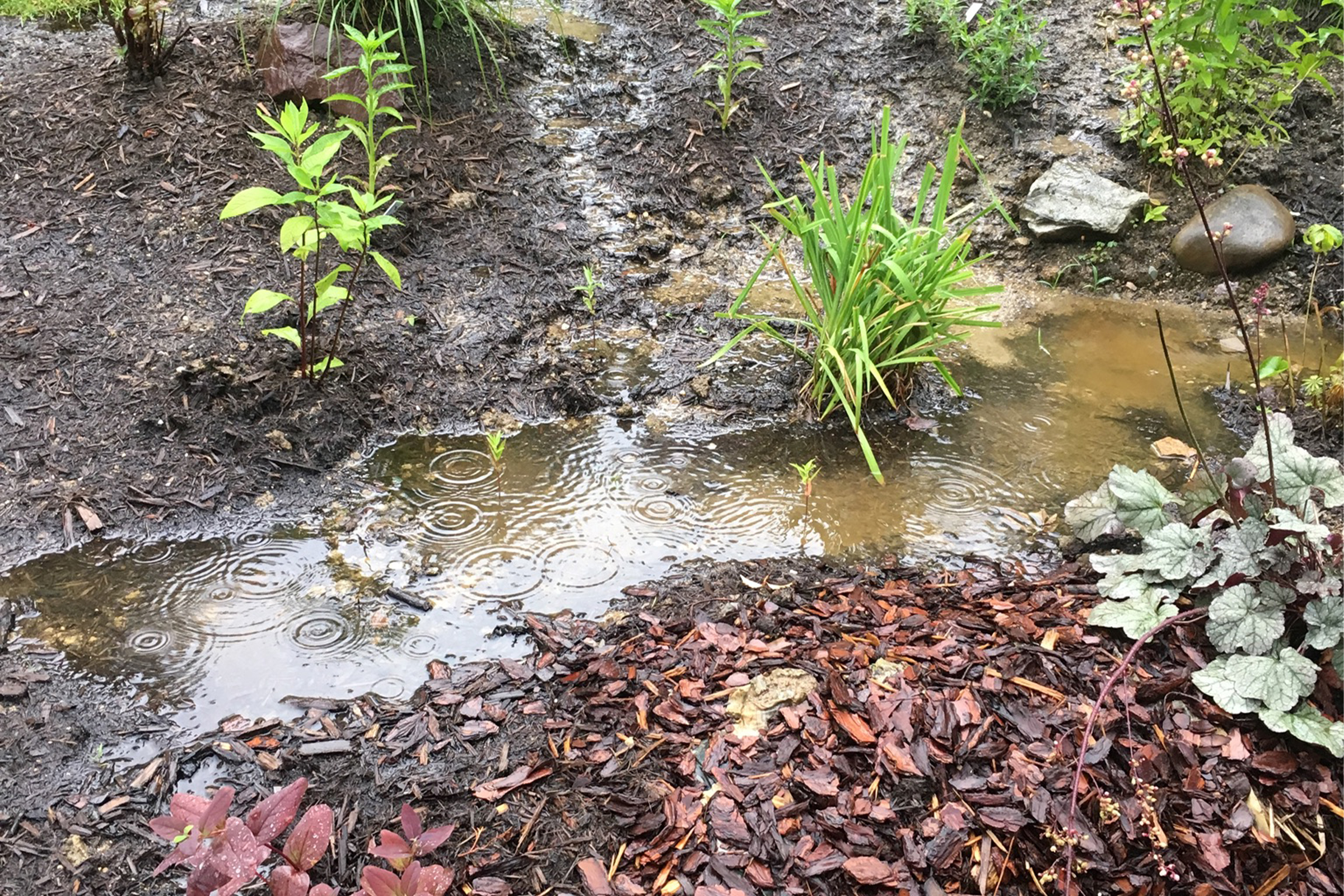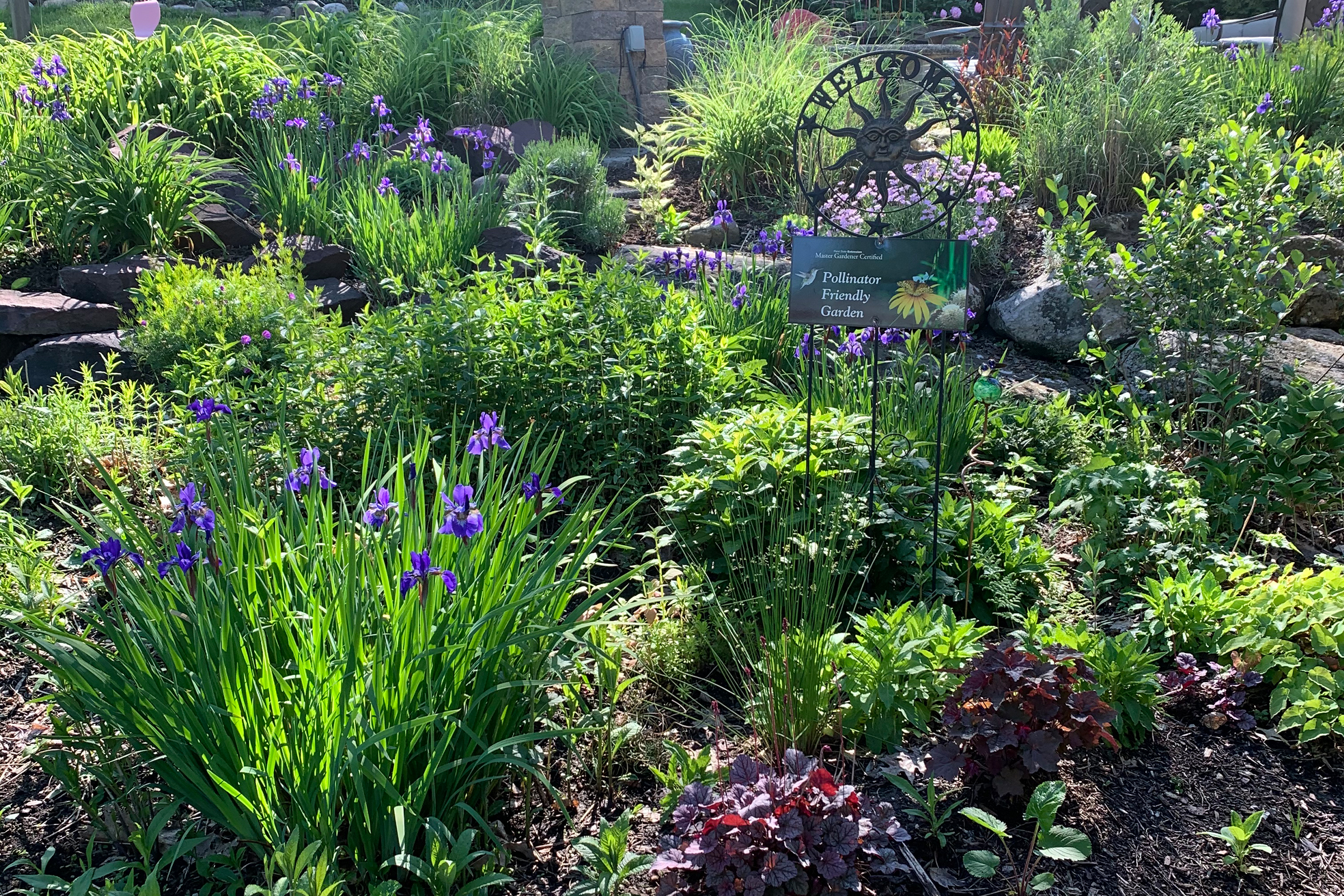Blog

Rainwater Harvesting
Pittsburgh averages 39 inches of precipitation in a year, including both rainfall and snow, which is almost identical to the national average. We are generally considered to be blessed with water, but can still suffer from periods of drought, like last September 2020 when we received less than an inch of rain (most months we get between 2 to 4 inches). This variability is challenging for gardeners who want to make sure that their veggies, trees and other plants are well watered and remain healthy. We cannot always rely on the rainwater to support our plantings and know that irrigation can be expensive. This is where rainwater harvesting comes in, where we store the water from rainy days in order to use it when we are without rain. This can be done with a rain barrel or underground in storage containers (or even just by letting it recharge the groundwater).
To learn more about rainwater harvesting we spoke with a Sustainable Landcare accredited professional experienced in developing rainwater catchment systems for homeowners, Trey Marks of Plant Geek. Trey shared the many benefits of rainwater harvesting. Rainwater is free and storing it to be used later helps you “reduce the amount of municipal water you use by collecting and storing the rainwater and using it for your indoor and outdoor plants” said Trey. Additionally, he explained that “rainwater contains very few salts and minerals and no treatment chemicals, unlike your tap water.” Another benefit he mentioned was that you “can reduce the amount of stormwater runoff from your property which will in turn help reduce off-site flooding and erosion, as well as keep urban pollutants like oil, fertilizers, and other chemicals out of our waterways.”

So how does one harvest rainwater? Trey says that, “one of the easiest ways you can harvest rain at home is by adding a rain barrel to your downspout.” Be sure that you know how much water is coming off of your roof so that you have the correct size of rain barrel. Here is a guide to calculating your roof runoff, from Rain Barrels Pittsburgh.
Trey also advises that “you make sure that your rain barrel has an overflow hose and that it's either connected back into the downspout or that you have a vegetated area that the water can run into.” The vegetated area can be a rain garden or bioswale. Trey explains that a rain garden is “a basin or depression that is planted and its purpose is to capture runoff and reduce flooding while allowing the water to infiltrate the soil and recharge the groundwater.” He advises native plants for raingardens as they are best suited to our local soils and weather conditions and have “deep root systems which help with soil infiltration rates”. A swale or bioswale is “a narrow channel and its purpose is to move water somewhere else”, explains Trey. He describes it as either being made up of rocks or planted. The main job of a swale is to direct water although some water does soak into the ground. Permeable pavers can also help to slow and sink rainwater into the ground, keeping it from running off our properties and into the sewers.

Trey advises that anyone interested in rainwater harvesting contact a professional for a consultation to be sure that you get the right system for your property. You can reach Trey by visiting the Plant Geek webpage. In addition, Upstream offers rainwater consulting and design services.
Resources:
- For a larger scale example of rainwater management see this Rainwater Garden for Wildlife in a previous blog posting.
- An overview of rainwater harvesting options from the University of Nebraska.
- Fascinating historical data on Pittsburgh precipitation provided by the National Weather Service.

